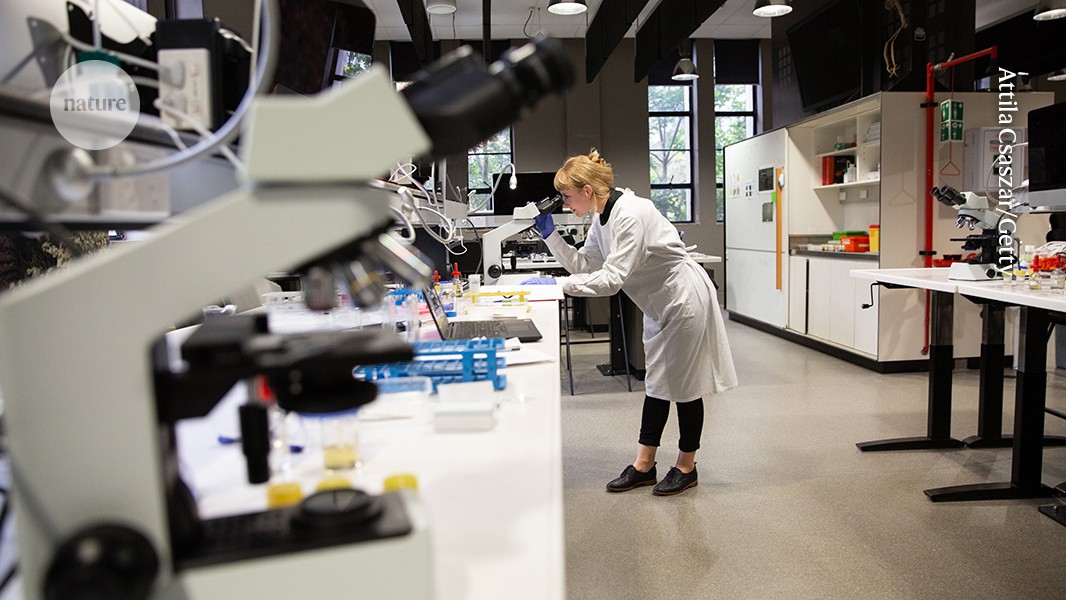
US researchers who receive consistent grant renewals produce more fresh research than those who don’t, a study finds.Credit: Attila Csaszar/Getty
In its bid to reduce government spending and rein in ‘woke’ science, the administration of US President Donald Trump has, over the past three months, terminated about 800 active research grants awarded by the National Institutes of Health (NIH). Now, a study published late last month in the journal Scientometrics1 highlights the long-term benefits of renewing existing grants, finding that US scientists who received renewals from the NIH over the past four decades produced more novel research than those who didn’t.
Although the study focused on a major US biomedical-science funding agency, the results might persuade governments worldwide “to implement policies that give stable funding to researchers”, says study co-author Aruhan Bai, a science-policy researcher at the Chinese Academy of Sciences Institutes of Science and Development (CASISD) in Beijing. Continuous funding, Bai says, will ultimately “encourage the real prosperity of science”.
Innovation takes time
In the new study, Bai and her co-author, Baicun Li, also at CASISD, analysed the scientific output of 642 US scientists who won NIH funding between 1985 and 2021. The study focused on recipients of R01 grants — common, yet highly competitive, awards from the NIH that provide up to five years of financial support and can be renewed several times. As of last year, the success rate of winning an R01 grant was 20%, on average, and the rate for winning a renewal was about 45%.
‘Disruptive’ science has declined — and no one knows why
Two subgroups of equal sizes made up the study cohort: one in which researchers received at least a three-year renewal of their first R01 grant without any funding interruption, and a control group of researchers who didn’t receive a renewal and had at least a three-year gap in funding afterwards. To ensure that the two groups were matched in terms of their research quality prior to receiving grants, Bai and Li used the scientists’ career stages, publication histories and measures of their prior research impact to ‘pair’ them.
To evaluate the scientists’ output after renewal decisions, the duo used public NIH-funding data, researchers’ publications listed in the biomedical-literature repository PubMed and a newer database called SciSciNet2 that contains scientific publication data and links to related funding and usage information.
Bai and Li harnessed these resources to examine the ‘novelty’ of researchers’ publications, calculating a score on the basis of the uniqueness and trendiness of key medical words and concepts in their papers. The pair also measured the ‘switching probability’ for scientists — how likely they were to hop to new research topics — and the ‘diversity’, or spread, of topics they studied using a model that calculated the similarity of their publications over a set period.The results revealed that researchers who received renewals without a funding gap were less likely to switch research topics and investigate a wide array of subjects than were those in the control group, and they produced papers featuring newer or more unconventional combinations of ideas.
The team found that renewed funding “helped scientists stay focused” so that they could “dig deeper into one area” of research, Bai says. As a result, she adds, the scientists could generate innovative applications down the line. “Innovation takes more than 10 or 20 years of continuous work,” she says.



